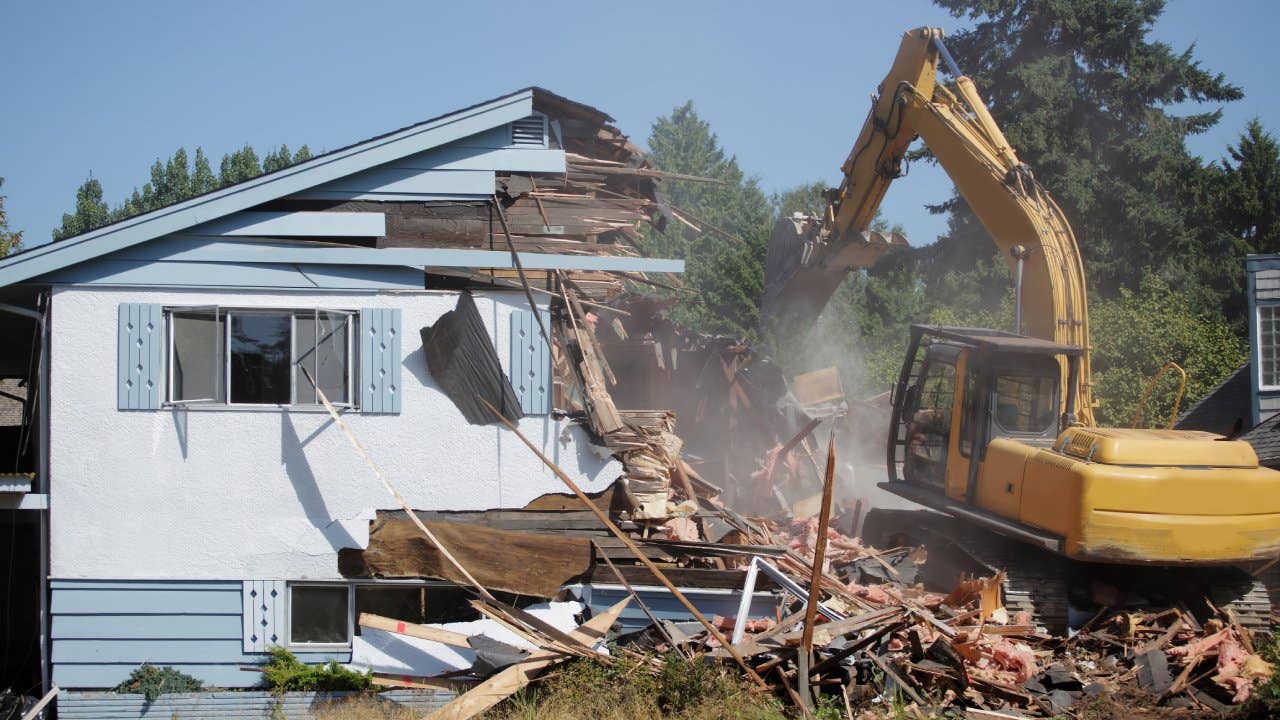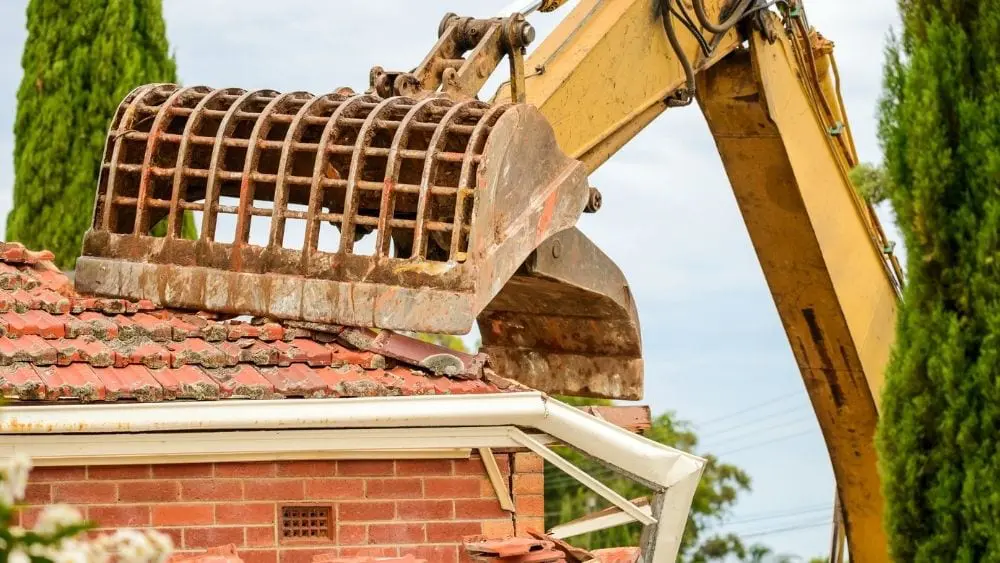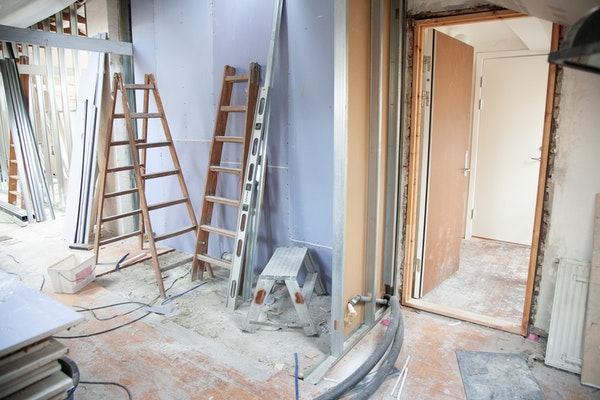To finance a teardown and rebuild, explore construction loans and home equity lines of credit. Consult with lenders specializing in construction and renovation financing.
Considering a home renovation project that involves tearing down and rebuilding can be both exciting and challenging. One of the first major hurdles is securing the necessary financing. Fortunately, there are several options available for those looking to undertake such an extensive project.
A construction loan, which is designed specifically for financing new home builds or major renovations, could be an optimal solution. These loans often cover both the demolition of the existing structure and the construction of the new one. Another alternative is using a home equity line of credit (HELOC), which taps into the equity of your existing home. It is crucial to compare interest rates, repayment terms, and lender flexibility, as well as to ensure that you have a solid credit rating to qualify for the best financing options. Working with a financial advisor or a mortgage broker who has experience with construction projects can provide invaluable guidance through this complex process.
Assessing The Viability Of Your Project
Embarking on a teardown and rebuild project is a thrilling but complex venture. Assessing the viability is a critical first step. It ensures that the journey to your dream home does not turn into a financial nightmare. Let’s explore what factors to consider to make informed decisions.
Initial Project Evaluation
Analyze local zoning laws and regulations to verify what’s possible on your property. Examine soil conditions and topography for any building challenges.
- Check for easements or restrictions.
- Inspect utilities access such as water and electricity.
- Consider the neighborhood’s architectural style.
Cost-benefit Analysis
Take a closer look at numbers with a detailed cost-benefit analysis. This comparison helps understand if the rebuild outweighs the current property’s value.
| Cost Element | Estimate |
|---|---|
| Demolition | $5,000 – $20,000 |
| New Construction | $100,000 – $500,000+ |
| Total Budget | Sum of all costs |
Include estimates for:
- Architectural plans
- Building permits
- Labor and materials
Compare the total with the value of similar homes in your neighborhood. Factor in future market trends too.

Credit: www.bankrate.com
Navigating The Loan Landscape
Planning to transform a dated house into your dream home? A teardown and rebuild may be the path for you. Navigating the loan landscape is essential for taking this big financial step. Various loan options are available. Knowing them helps manage your budget effectively.
Types Of Construction Loans
Construction loans differ from typical home loans. They often convert into a permanent mortgage after construction completion. Let’s explore.
- Construction-to-Permanent Loans – Finance your project with a single loan that converts to a long-term mortgage.
- Construction-Only Loans – Offers financing just for the building period, usually up to a year. You’ll need to settle the balance or get a new loan after.
- Renovation Loans – Tailored for major remodels, these intertwine the cost of tear-down with renovation expenses.
- Owner-Builder Loans – Designed for those who are also the builders, but they demand detailed construction plans and expertise.
- End Loans – You must secure this after the completion of construction if you have a construction-only loan.
Pros And Cons Of Each Loan Type
Each loan type comes with its unique advantages and challenges.
| Loan Type | Pros | Cons |
|---|---|---|
| Construction-to-Permanent Loans | Streamlines financing. Fixed interest rates for peace of mind. | Requires precise upfront planning. Higher interest rates compared to end loans. |
| Construction-Only Loans | Flexibility to choose a long-term lender after construction. Short-term solution. | Two loan processes. Potentially two sets of closing costs. |
| Renovation Loans | Combines purchase and renovation costs. One-time close. | More paperwork. Contractor approval needed. |
| Owner-Builder Loans | More control over the project. Potential cost savings. | High scrutiny from lenders. Experience requirement. |
| End Loans | Familiar mortgage structure. Competitive interest rates. | Requires qualifying for two separate loans. Market risk at completion. |
Strategic Budget Planning
Embarking on the journey to tear down and rebuild your dream home requires meticulous financial planning. A well-thought-out budget is crucial. It ensures your project stays on track. Let’s break down how to create a budget for this exciting endeavor.
Creating A Comprehensive Budget
First, it’s key to know your numbers. Start by estimating the entire project cost. Include demolition, construction, permits, and design. Let’s look at how to detail your budget:
- Itemize Costs: List each part of the rebuild. Assign an estimated value to each.
- Get Quotes: Reach out to professionals. Collect multiple quotes for accuracy.
- Include Services: Don’t forget utilities and additional services.
Organize these details in a table for clarity:
| Description | Estimated Cost |
|---|---|
| Demolition | $X,XXX |
| Rebuild (Materials) | $XX,XXX |
| Rebuild (Labor) | $XX,XXX |
| Permits | $X,XXX |
| Design Fees | $X,XXX |
| Contingency | $X,XXX |
Contingency Funds And Unexpected Costs
Unexpected expenses pop up. A good rule is to add 10-20% of the total budget as a contingency fund. This is your safety net. Consider these points:
- Market Changes: Material costs can fluctuate. Be ready for this.
- Project Delays: Weather or permits can cause delays. This might cost more.
- Hiccups: Hidden issues often reveal themselves during demolition or construction.
Remember, thorough and realistic budgeting is the backbone of a successful teardown and rebuild.

Credit: www.newhomesource.com
Preparation For Loan Application
Embarking on a teardown and rebuild project is exciting. Securing financing is a critical step. Proper preparation for your loan application paves the way to success. Start by understanding your creditworthiness and gathering needed documents.
Credit Score Considerations
Begin with your credit score. It affects loan approval and interest rates. Aim for a score above 700. Check your credit report early for errors. Fix them to boost your score.
Pay down debts to improve your debt-to-income ratio. Lenders favor ratios under 36%. Timely payments and low credit utilization matter.
Gathering Necessary Documentation
Lenders will ask for many documents. Start collecting them now.
- Proof of income: Recent pay stubs and tax returns
- Bank statements: These show your savings and spending habits
- Asset information: Includes investments and other property
- Debt records: Any current loans or credit lines
- Project estimates: Cost breakdown from your builder
- Construction plans: These detail the scope of the project
Create a checklist to ensure you don’t miss anything. Keep copies organized. This makes the loan application process smoother.
Remember, a loan application is thorough. Every detail counts. Accuracy and completeness can make or break your approval. Prepare well to bring your rebuild dreams to life.
Working With Lenders
Financing a teardown and rebuild project requires a unique approach with lenders. Navigating this process can be intricate. Collaborating with financial institutions that understand these projects is crucial. The journey begins by choosing a compatible lender. It moves onto mastering the terms and conditions of the financing agreement.
Choosing The Right Lender
The first step involves identifying lenders who specialize in construction loans. Candidates include local banks, credit unions, and national lenders. Look for institutions that have a history of funding similar projects. It’s essential to assess their flexibility, speed of funding, and reputation in the market.
- Assess lender experience with construction loans
- Evaluate funding timelines
- Consider reputation and customer reviews
Understanding The Terms And Conditions
Once you’ve shortlisted lenders, dive into the loan terms. Interest rates, loan-to-value ratios, and repayment schedules are among the critical components. Ensure clarity on the draw schedule for construction milestones and the inspection process.
| Term | Description |
|---|---|
| Interest Rate | The cost of borrowing money as a percentage |
| Loan-to-Value Ratio | Percentage of property value you can borrow |
| Repayment Schedule | Timeline for paying back the loan |
| Draw Schedule | Disbursement of funds through construction phases |
Understanding these elements helps safeguard against unexpected circumstances. It ensures a smooth financial flow through the rebuild phase. Confirm hidden fees or penalties for early repayment as well.

Credit: www.consumerscu.org
Navigating The Construction Phase
Embarking on a teardown and rebuild project is an invigorating journey. The construction phase stands out as pivotal. Mastery over the financial aspects during this stage ensures a smooth transition from blueprints to reality. Let’s delve into the essentials of fund disbursement and staying within your budget.
Fund Disbursement And Management
Effective management of funds is crucial. Once your loan is approved, the money is released in stages. This process is known as drawdown.
- Initial funding covers demolition and site prep.
- Subsequent draws align with construction milestones.
- Lenders may require inspections before releasing funds.
It’s important to establish a payment schedule with your contractor. This keeps the project flowing without financial hiccups. Always keep a detailed record of all transactions and agreement terms.
Staying On Budget Throughout Construction
Adhering to your budget is a cornerstone of project success. Unplanned expenses can appear, but with foresight, they won’t derail your rebuild.
| Strategy | Action | Outcome |
|---|---|---|
| Regular Reviews | Monitor expenses weekly. | Recognize overspending early. |
| Clear Communication | Discuss costs with your builder. | Ensure transparency and accountability. |
| Contingency Plan | Set aside an emergency fund. | Handle unexpected costs without panic. |
Remember, a budget is a living document. It requires adjustments and revisions as the project advances. Stay proactive with cost tracking and don’t let minor issues become expensive problems.
Frequently Asked Questions For How To Finance A Teardown And Rebuild
Can You Demolish And Rebuild With A Mortgage?
Yes, you can demolish and rebuild with a mortgage, but you’ll need your lender’s approval and a construction loan may be necessary. Ensure you meet all loan criteria and building regulations before proceeding.
Is It Cheaper To Renovate Or Tear Down And Rebuild?
Renovating is often cheaper than rebuilding, but costs vary based on scope, materials, and existing structure conditions. Assessing your specific renovation versus rebuild scenario is essential for an accurate cost comparison.
Do You Have To Pay Off A House Before You Tear It Down?
No, paying off your house before demolition is not required, but you should notify your lender and settle any mortgage or lien issues beforehand.
Can You Get A Mortgage On A Run Down House?
Yes, you can get a mortgage on a run-down house, but it might require a specialized loan. Lenders will assess the property’s condition and future value before approval.
What Is Teardown And Rebuild Financing?
Teardown and rebuild financing refers to a specific type of loan or financial arrangement that allows homeowners to demolish an existing house and construct a new one in its place.
Conclusion
Embarking on a teardown and rebuild project requires sound financial planning. Exploring diverse funding options, like construction loans or partnerships, paves the way for success. Remember, a clear budget and continual cost assessments are crucial. Seek professional advice to ensure your investment blossoms into your dream home.
Start your rebuild journey with confidence, backed by the right financial framework.










